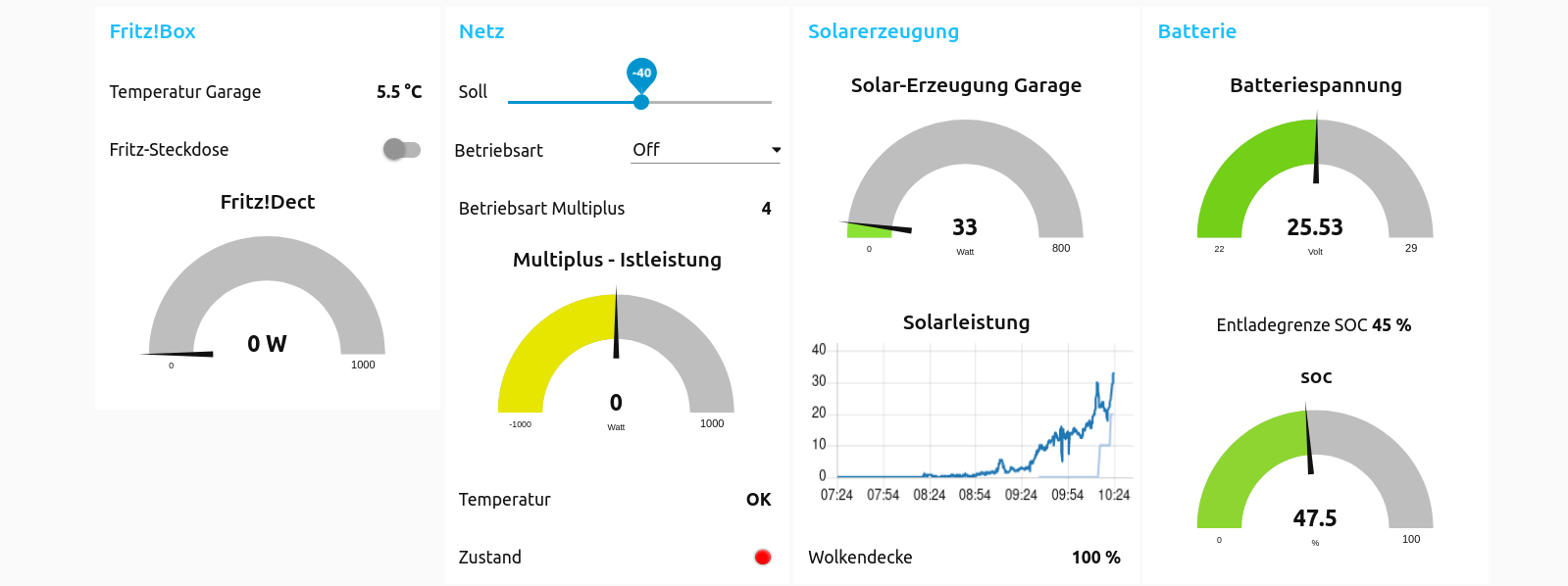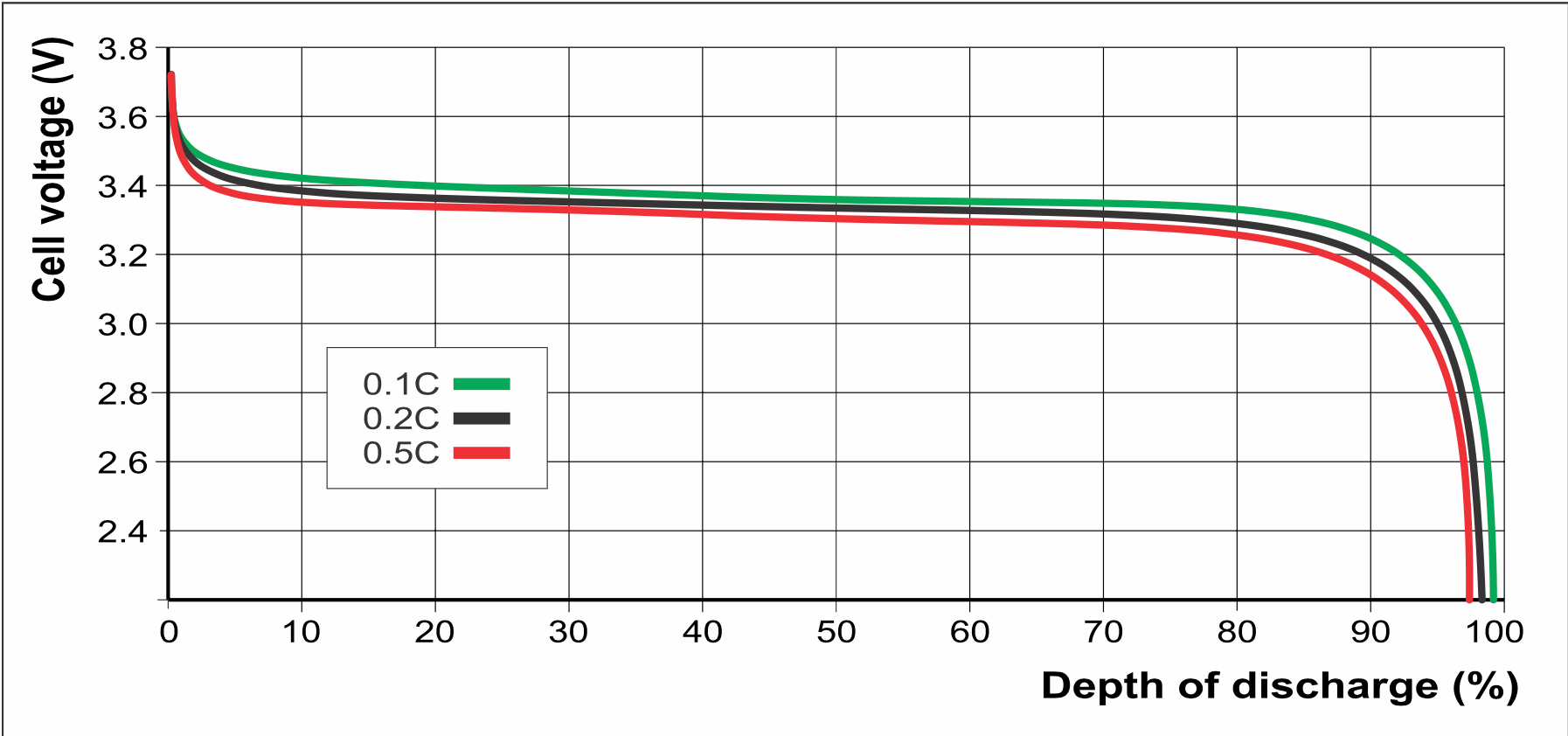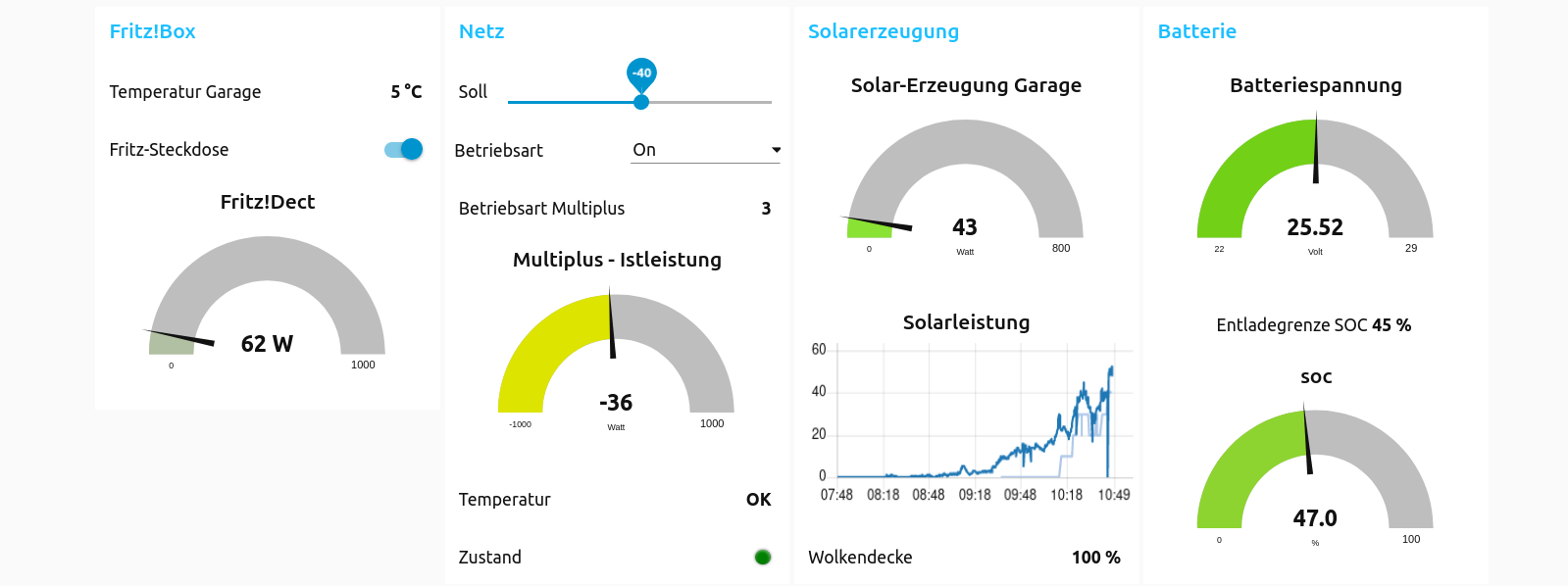My simple System-Set-UP:
Multiplus 1200/24, Lithium-Batterie with a simpel BMS without CAN, MPT100/20 Raspi 3B with Venus OS 2.80 /different Versions, now Large with Node-Red
Problem: During winter I need several day to charge the battery only with MPT - Multi is switched off and disconnected from grid. The battery-SOC rises slowly from day to day.. after switching on the Multi the SOC of the Multi is read out, which results in nearly full battery by voltage but an SOC of 50%, which is the discharge-limit in winter...
Solution?
From Version 2.80~33 there is an Update:
"Extra battery current: for systems without a battery monitor but with Solar chargers, the current as reported by the solar chargers it synced to the Inverter RS or Multi RS, where they'll use it for their SOC calculations."
So far I remember my problem was fixed with that update - today I'm not sure. Because I switched to Venus OS Large and had the problem again with actual SW V2.80~41-large-25. Is it planed, that the changing SOC due to solar charging via MPPT is
caculated by Venus OS and send to Multiplus after switching on?
Thanks for all the great work an possibilities, which is offered here...
Rue


 From my experience SOC is moving with Multi switched off. Even in Dashboard of VRM SOC is moving by MPPT. Who is tracking the SOC ?
From my experience SOC is moving with Multi switched off. Even in Dashboard of VRM SOC is moving by MPPT. Who is tracking the SOC ?






 And after switching on, the SOC is resetted to 47%..
And after switching on, the SOC is resetted to 47%..

